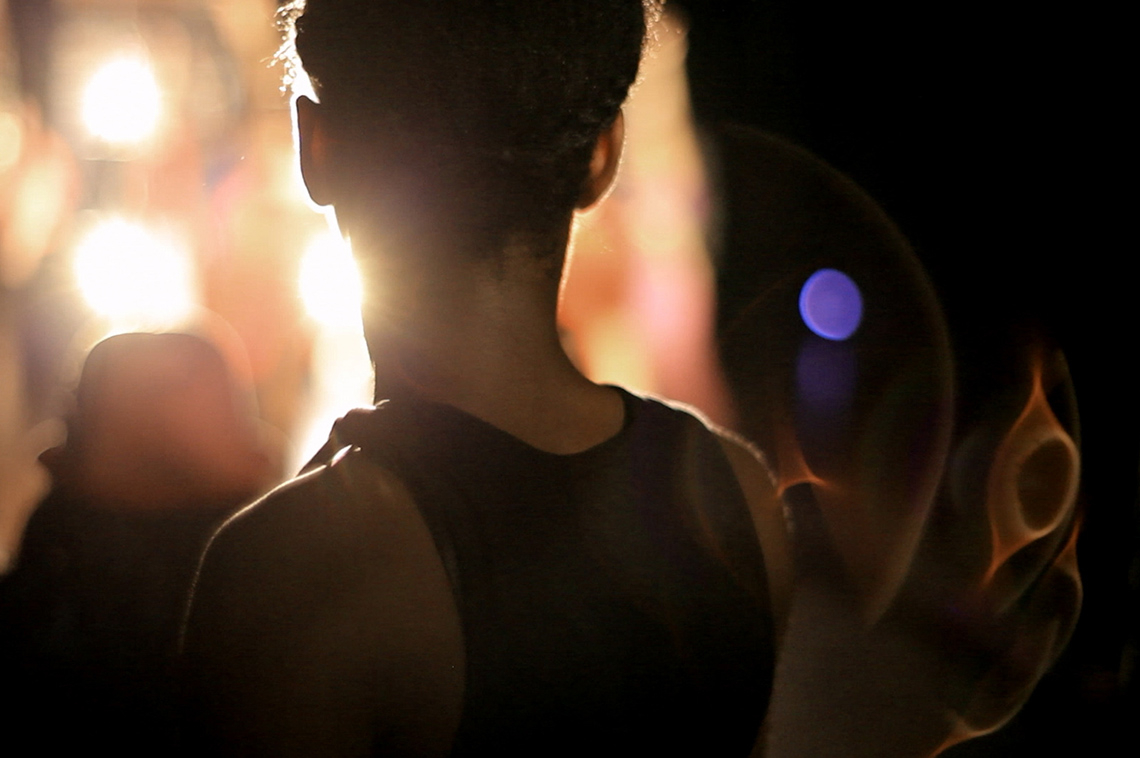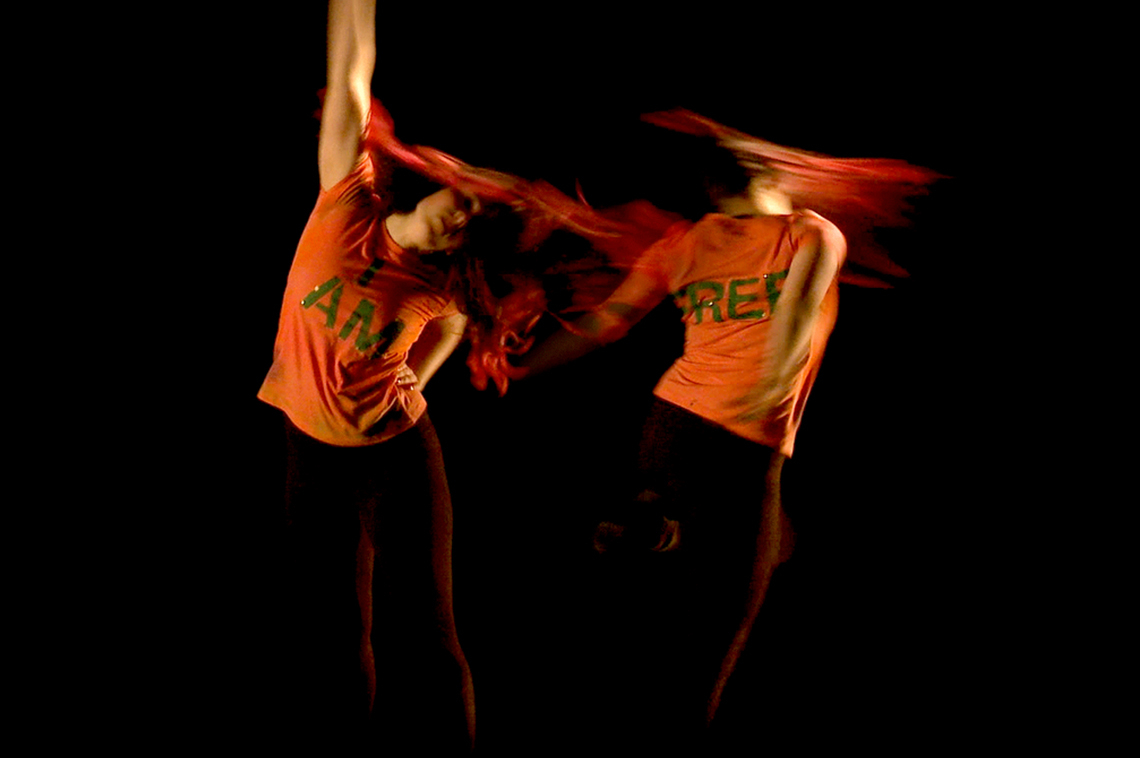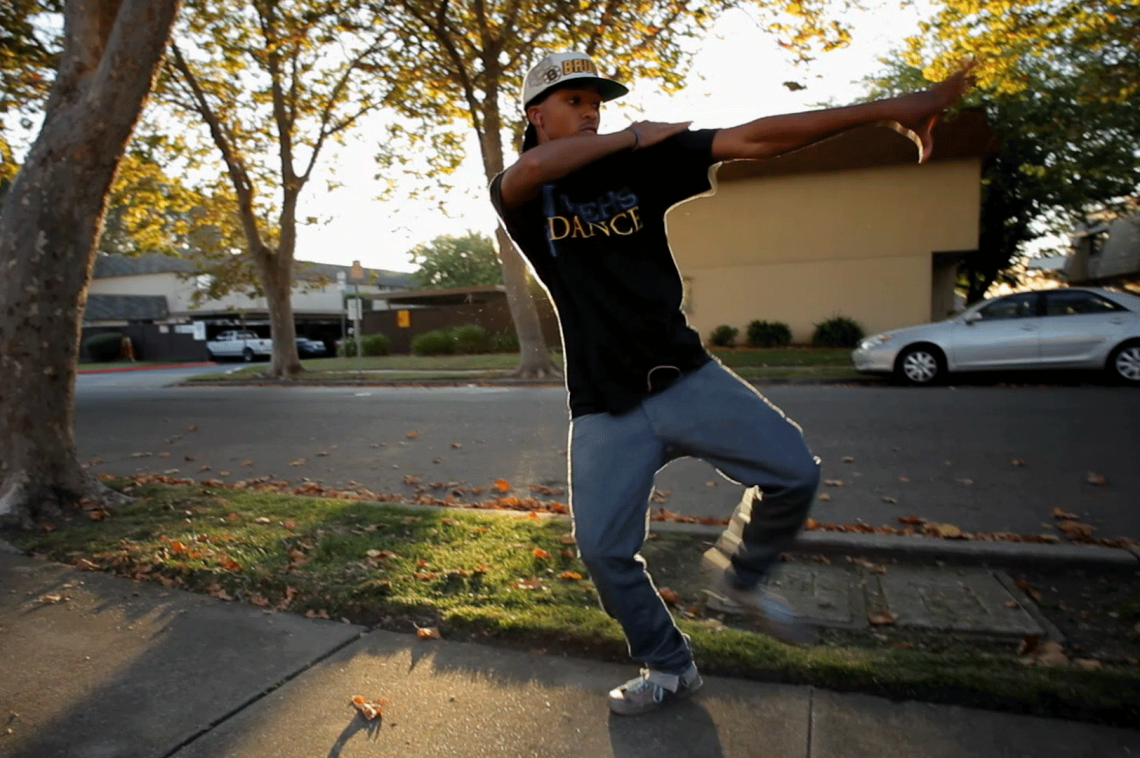


When the place you live in is a disorienting study in contrast—comprising great wealth and great poverty, soaring youthful hopes and debilitating structural realities, deep love and terrible violence—how can you find your voice, make wise decisions, stay grounded in the tumult?
F R E E: The Power of Performance is a feature-length documentary film directed and produced by Suzanne LaFetra and David Collier that follows five teenagers who use dance and spoken word to transcend the traumas inherent in their daily lives. F R E E captures the transformative year they spend in a program at the Destiny Arts Center in Oakland, California, where they work together to create a performance based on their personal stories. As the months progress, they learn how artistic expression can help them push beyond the struggles and discouraging narratives they (and their communities) face, and find strength, resilience, and hope for the future.
Art, as the trailer for the film summarizes, doesn’t make these teens’ lives in fractious urban America easy—it makes their lives rich.
We asked Suzanne a few questions about how she observed art and place intersecting while making the film, who’s watching it, and the importance of the arts to the wellbeing of people and communities.
ArtPlace: The students you follow in F R E E are growing up in Oakland. They’re doing the work of translating their life stories to the stage in Oakland. They’re presenting their work to other residents of Oakland. In the making of the film, what did you observe about the role place plays in the students’ lives, artistic processes, and personal transformations?
LaFetra: Place permeates everything we do: how we feel, the way we move about in the world, our ability to realize our dreams or even get from A to B during our day. The Bay Area is one of the wealthiest places on earth, yet there are places in Oakland that are devastatingly impoverished.
We know that demographics and where we are raised determines to a large degree how successful we will be.
The year we filmed at Destiny Arts Center, the murder rate in Oakland was seven times the national average. More than half of the households in the city earned less than $30,000 a year. Many of the young people at Destiny were subjected to violence in their neighborhoods. As Sarah says in the film: “The violence that we experience in the streets, or in our families, or in our own minds requires silence, attention, love, to, to just come back to this peaceful place inside of ourselves.”
In the film, we tried to show the beauty and creative spirit of Oakland, as well as the rougher sides of the city. Arts programs like [those offered at] Destiny can make a huge difference in changing the narrative for a young person; helping them to see themselves as more than just a kid from a “bad” neighborhood.
ArtPlace: “Education & Youth” is one of the community development sectors ArtPlace believes can benefit from increased creative thinking and processes. [Here’s how we define it.*] Can you speak to how their involvement in the arts has helped the students in the film to become more involved at their school and/or their other communities in Oakland (neighborhood, church, sports team, etc)? Do you have any sense of how Gaskill, or other areas around Destiny, have benefitted from the students’ creative work?
LaFetra: We know that participation in programs like the one in the film boost students’ academic performance. In Oakland, a large portion of students drop out of high school. Depending on the year, it’s as high as one-third failing to graduate. For those who participated in the youth company, 99 percent graduated from high school.
Many of the youth in the film have gone on to work in their communities. Alaysia is getting her master’s degree in social work. Jamany has plans to launch a youth-based organization similar to Destiny. Over the years, lots of Destiny alums go back to Destiny. Both Tilly and Nee Nee from the film are currently working [there].
ArtPlace: In addition to the film’s airing on national public TV this fall, you offer screening kits and discussion guides for schools, libraries, and other groups who want to share it with their community. What kinds of groups are screening F R E E locally? How are they presenting it? What feedback are you getting from them?
LaFetra: We have screened the film for thousands of audience members, from high school students to incarcerated youth to a senior center. We’ve been surprised and delighted that the film resonates with a large range of audiences. Often, the film is screened in a high school classroom, paired with reflections, writing, and movement exercises from the discussion guide. I love attending screenings, where we can hear directly from young people, who often say things like, “I haven’t seen a movie about kids like me before.” Older audiences have expressed appreciation at being exposed to what young people today are really dealing with.
The best thing about sharing the film is seeing that young people come away with a message of hope. One eleventh grader’s comment exemplified it: “There aren't many people in Oakland who will tell you that you're worth something, and because we lack that, many children go on thinking they will never become anything, and that's exactly what happens to them. However, this movie tells us that no matter the social or economic walls we face, we can always overcome them and do some things for ourselves and make something out of ourselves.”
ArtPlace: What do you, or would you, say to people who aren’t familiar with the importance of the arts to young people—to someone who might promote the traditional “reading, writing, and ’rithmetic” line on youth education?
LaFetra: I would say just two words: art works. There are numerous academic and governmental studies on this subject, but I’ve had the privilege of seeing it firsthand with so many students at Destiny.
ArtPlace: As a filmmaker working with teenagers on a creative project in an underserved area, what was your experience of connecting across generational and economic status lines through the arts? Were there any surprises? Any big takeaways?
LaFetra: I was often surprised at how open and accepting of us the youth were. Their courage and willingness to share their stories says a great deal about their character, and also about what a nourishing foundation a program like Destiny’s can provide. We spent a lot of time with the young people and their families, with and without the cameras. We hung out at rehearsals, and followed them home to more fully capture their stories. David, my co-director, and I participated in Destiny’s sharing exercises, the retreats, the meditations. We had ground rules—like we would shut off the cameras when requested—and respected the privacy of students who did not want to be filmed. I think that went a long toward building trust and empathy in all directions.
I have two teenagers myself, as does David. We both learned a lot about what young people have to contend with these days. After spending so much time with the youth at Destiny, and then the months and months of working with their stories during the editing process, I came to have a deep fondness for them. I would dream about them, worry about them, check up on them through social media. Sometimes, I made an editorial choice to leave something out of the film out of a desire to protect their privacy. I guess what I’m saying is that I felt a kind of parental responsibility to represent their stories with care.
To this day, every time I visit Destiny, I come away uplifted. Having the opportunity to be around young people and that kind of energy gives me hope.
***
*The "Education & Youth" sector is comprised of individuals, organizations, and policymakers who are working to strengthen a community’s well-being through its academic and youth development initiatives, which may or may not take place in traditional school settings. Practitioners in this sector may help to support the relationship between schools and the communities they serve; assist in school reform; work to improve student engagement; empower youth to transform their built environment; or help students build a pipeline to gainful employment. Every educational model—from charter schools to alternative community learning centers—has the potential to integrate whole-community health goals into its programs, communications, and outreach.
- F R E E: The Power of Performance is screening on national public television stations around the country this fall. See when it’s airing on a station in your area.
- Learn how to host a screening of F R E E in your community.





